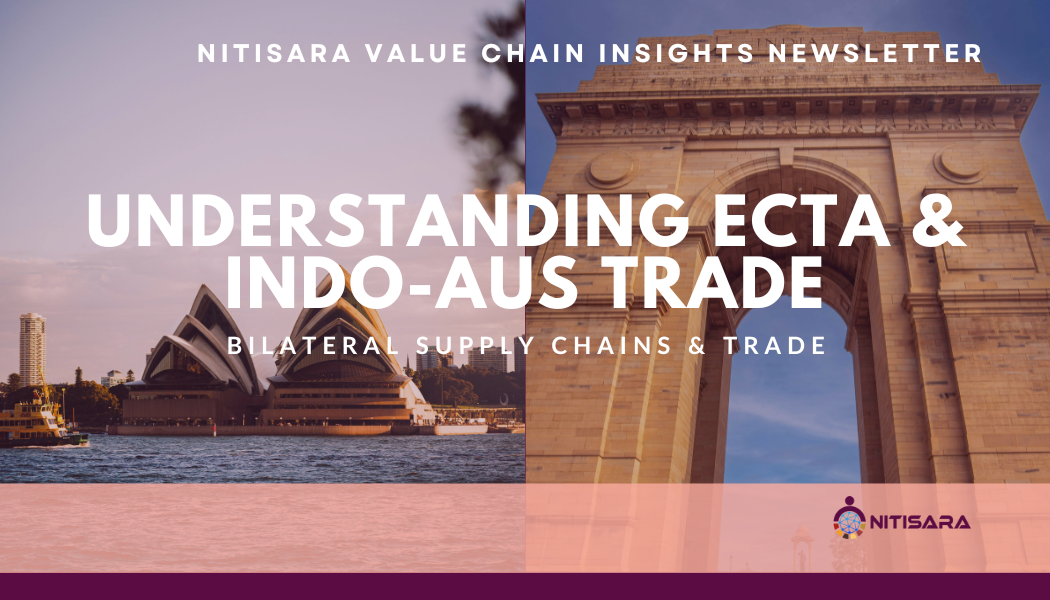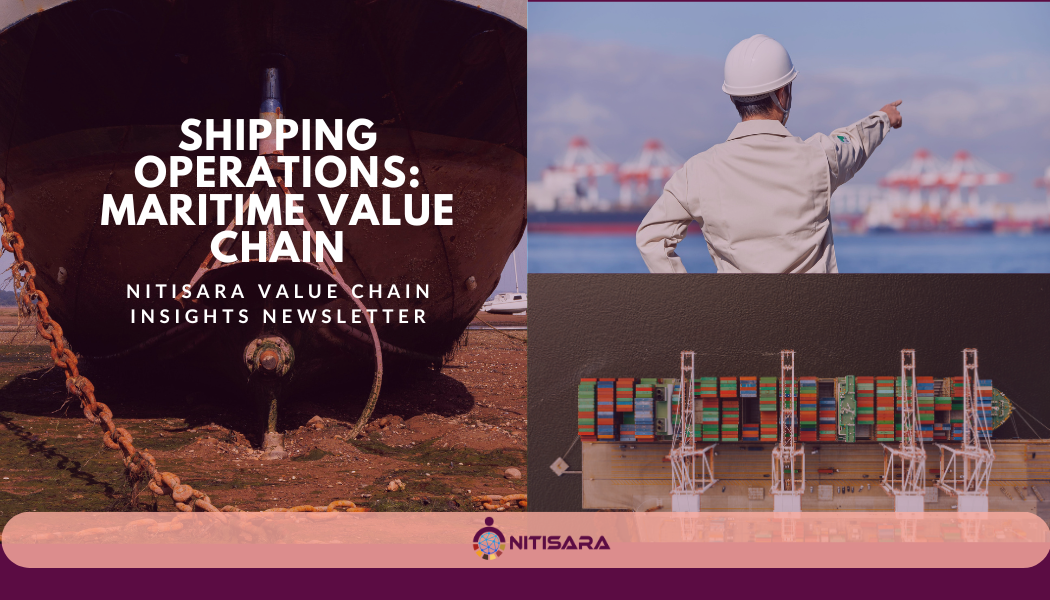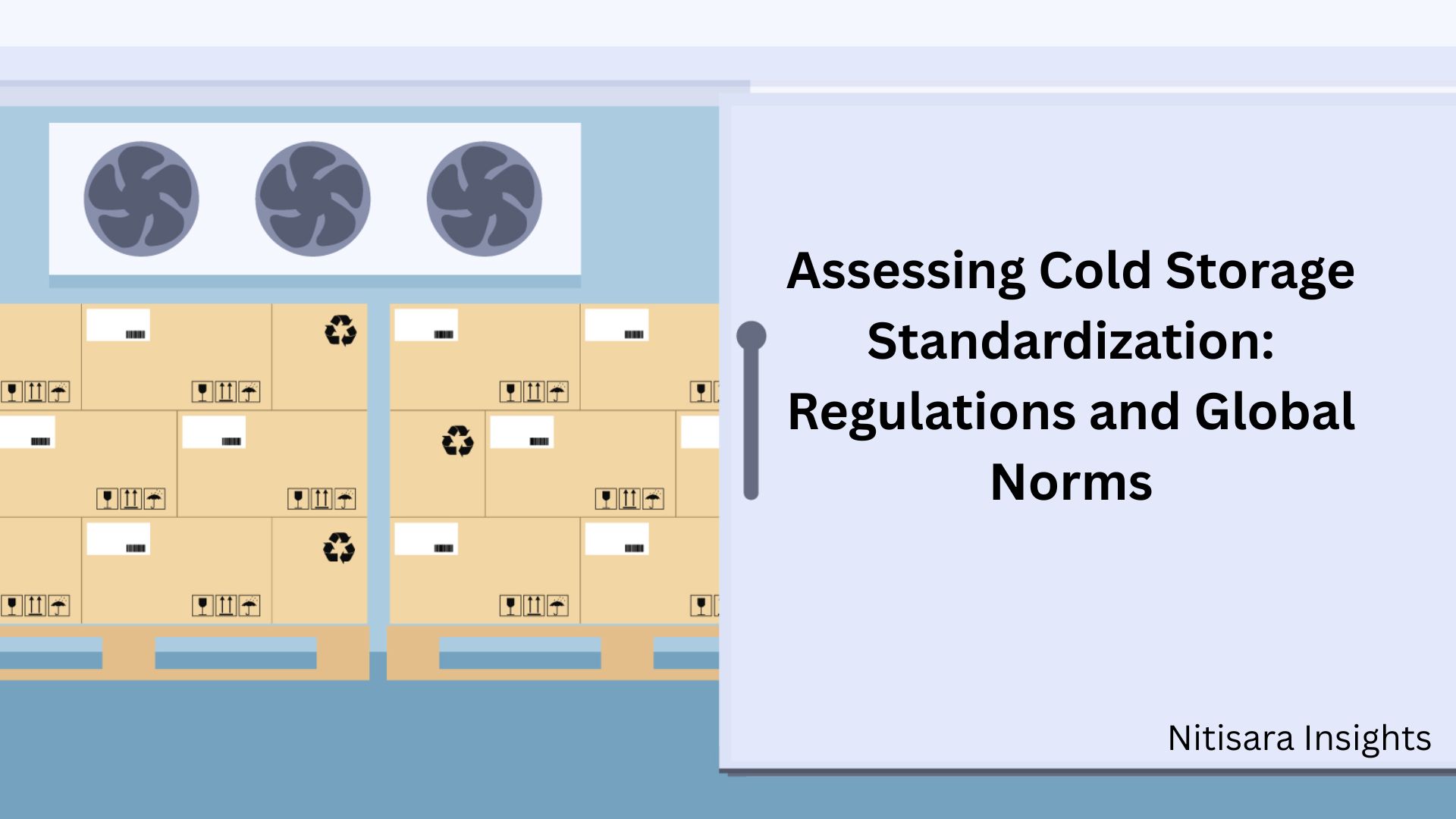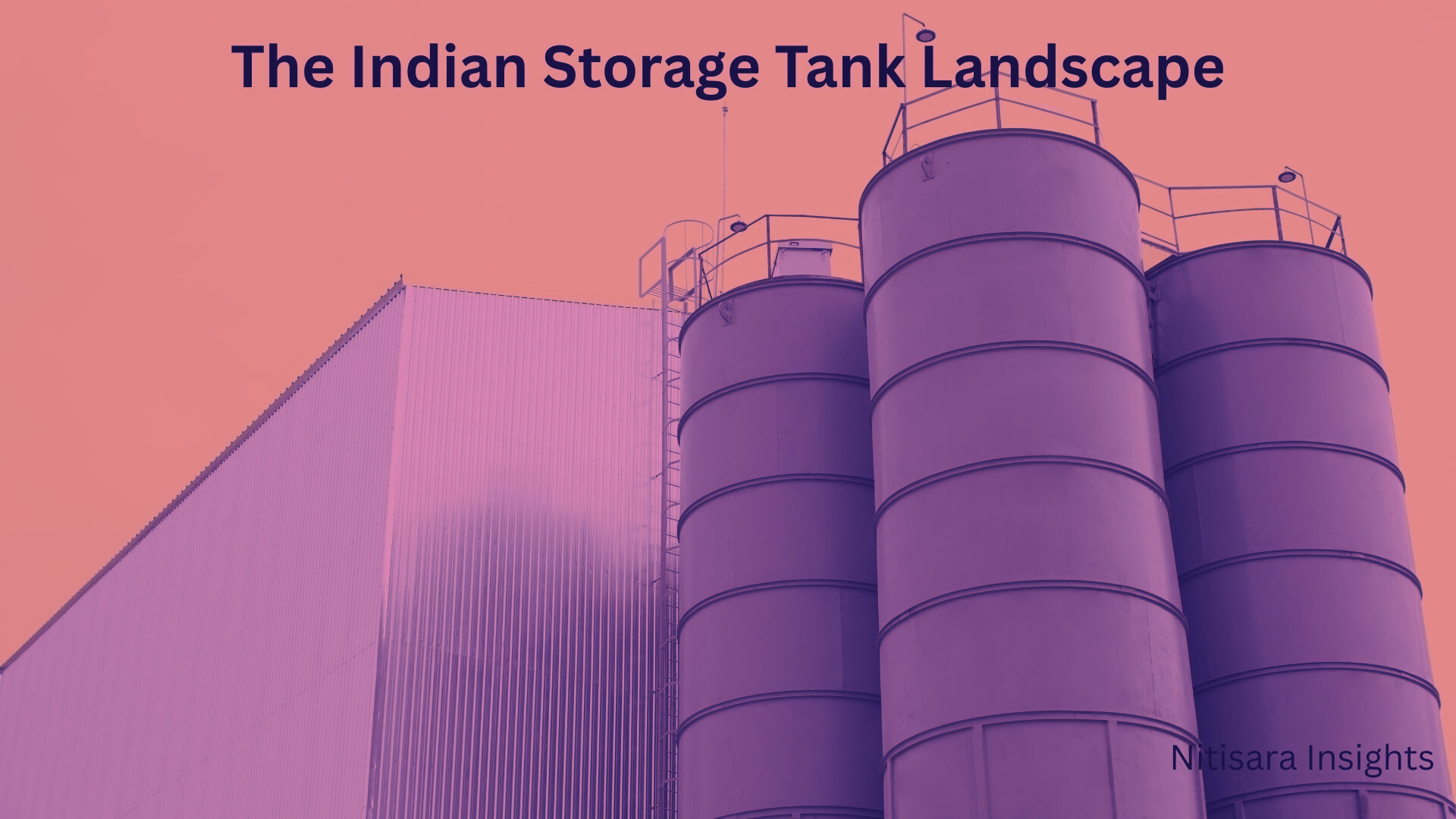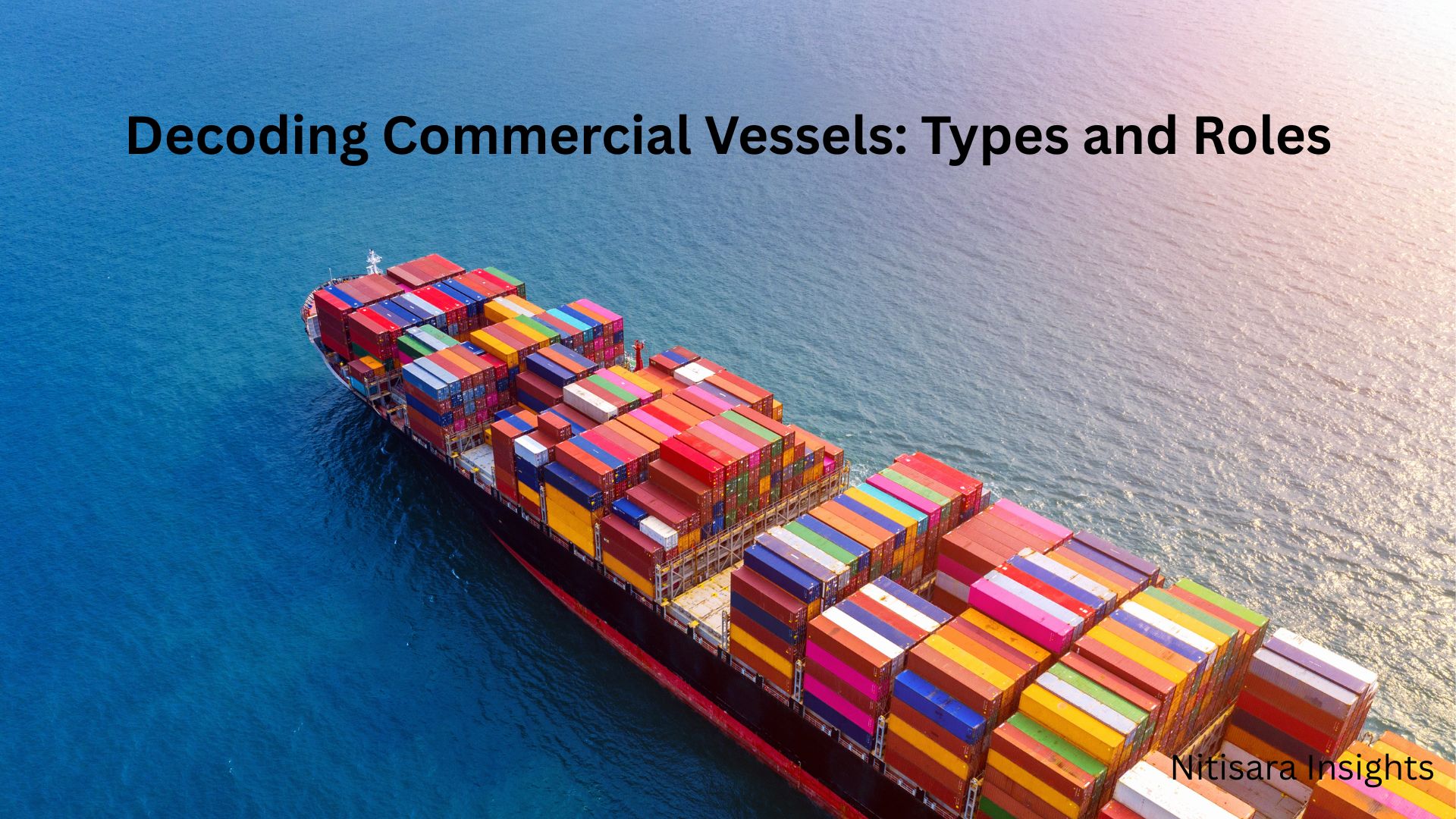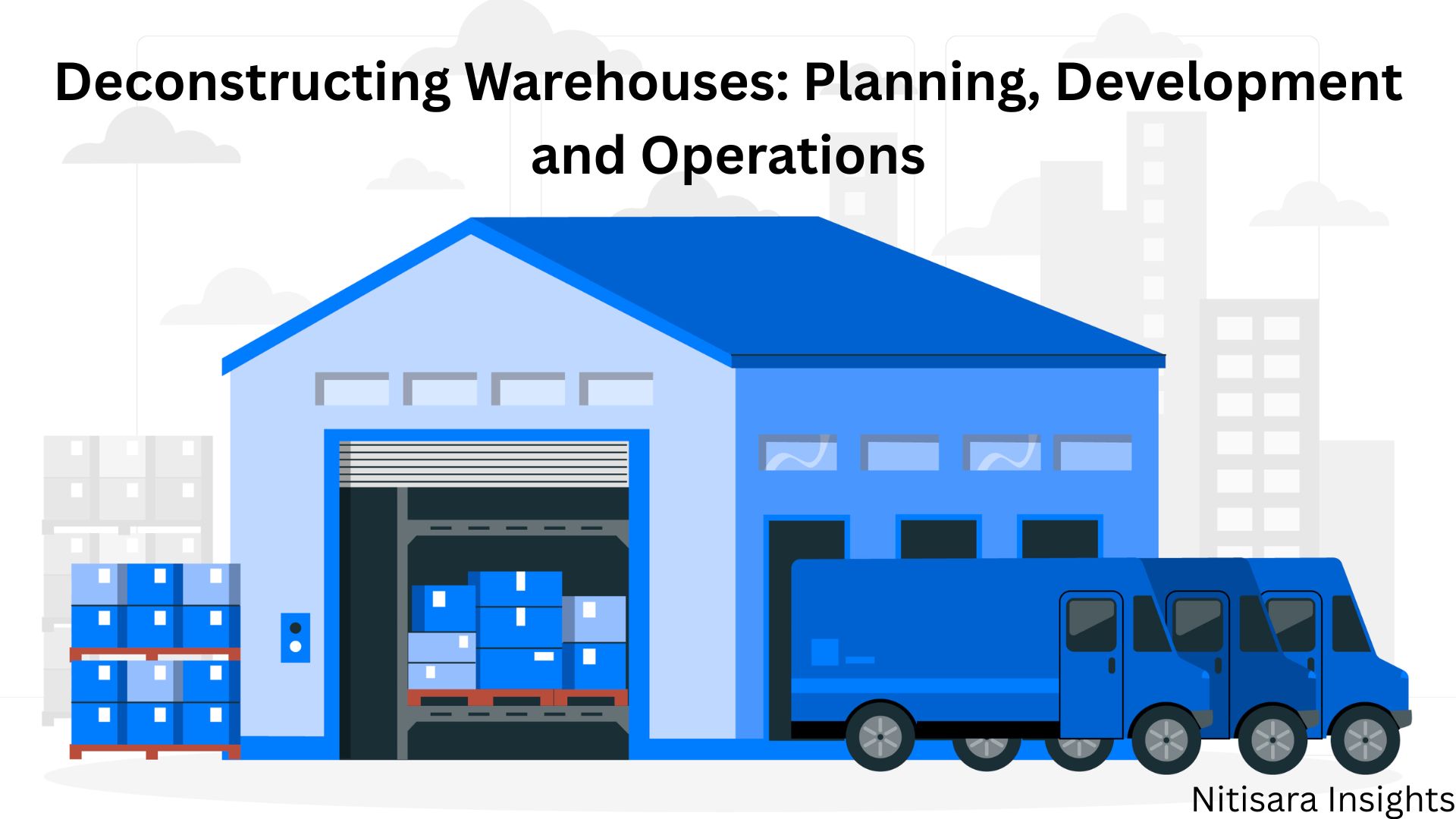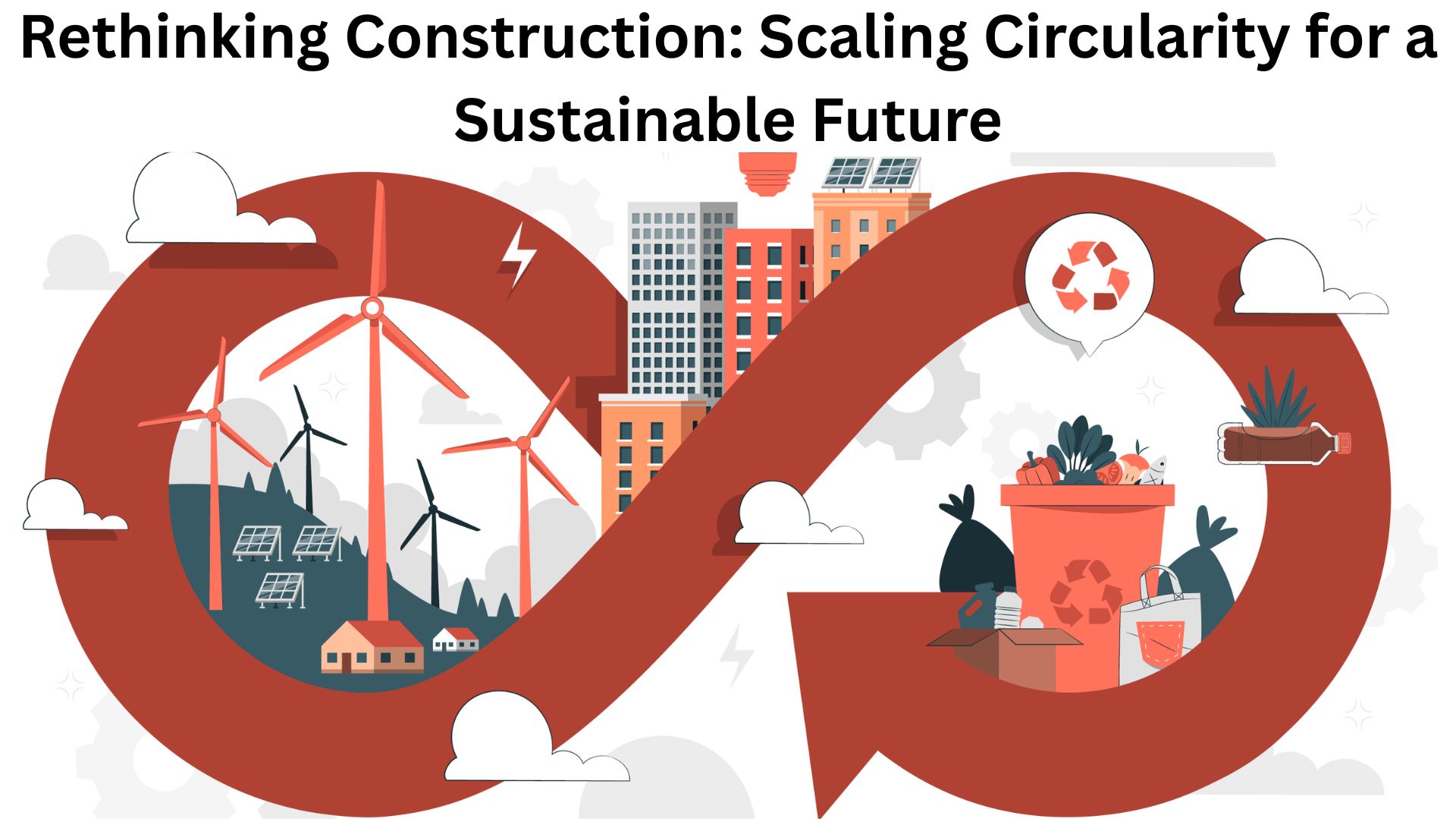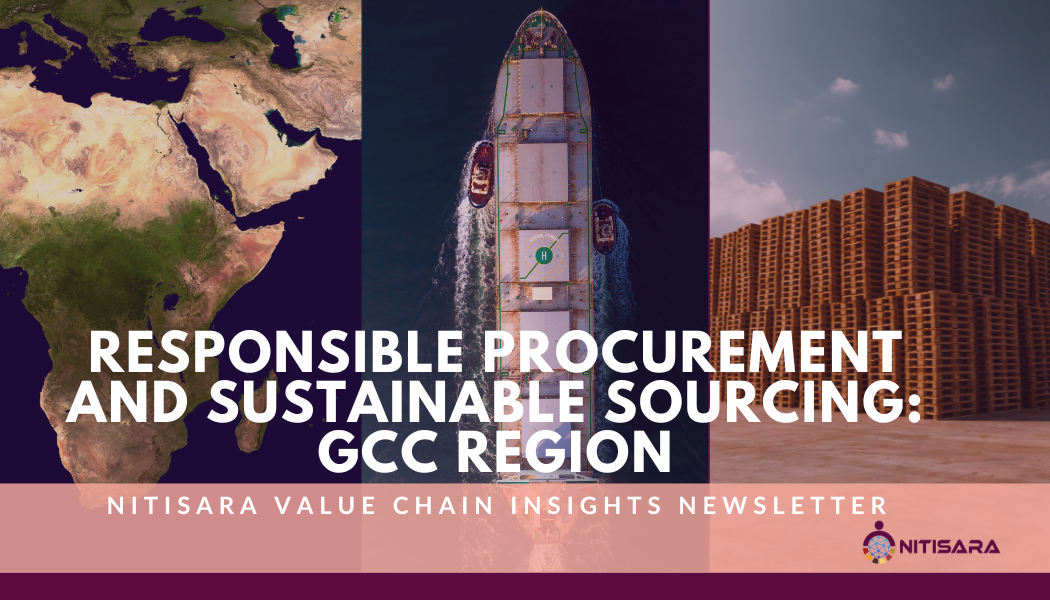
By Ansh Agarwal, Researcher, Nitisara
With ESG regulations gaining momentum across the GCC, responsible procurement has emerged as a frontline strategy for sustainability, resilience, and competitive advantage. From Saudi Arabia’s IKTVA and Vision 2030 to the UAE’s ESG reporting mandates and circular economy policy, sourcing decisions now carry weight far beyond cost. A PwC survey reveals that 60% of Middle Eastern consumers consider sustainability in investment decisions which is well above the global average. At the same time, global ESG investments surpassed $35 trillion, pushing companies to align sourcing with environmental and social metrics. This blog explores why responsible procurement is no longer optional in the GCC, unpacks new frameworks like ESG prequalification and carbon scoring, and explains how digital platforms, local content, and circular economy practices are reshaping sourcing strategies in the region.
Introduction
The procurement landscape across the Gulf is undergoing a profound transformation as responsible sourcing becomes central to national sustainability ambitions. While Saudi Arabia’s IKTVA and Vision 2030 and the UAE’s ESG mandates and Circular Economy Policy are at the forefront, other nations are following suit. Oman is actively integrating ESG principles into its procurement through its Vision 2040 framework and free zone regulations that reward low-carbon, locally sourced goods, particularly in sectors like manufacturing and logistics. Qatar is advancing ESG procurement through initiatives linked to its National Vision 2030 and its sovereign wealth fund’s focus on sustainable investments, with increasing emphasis on supplier transparency and low-carbon sourcing in energy and infrastructure. Bahrain has begun issuing ESG reporting guidelines for public procurement tenders, and Kuwait has introduced early-stage policies encouraging circularity and local content in government contracts. Collectively, these moves signify a regional pivot—where procurement is no longer just a cost lever, but a strategic function shaping resilience, compliance, and long-term competitiveness in the Middle East.
Why is Responsible Procurement central to the Sustainability Agenda in the region?
The regulatory landscape in the Gulf is undergoing a pivotal shift. Sustainability and transparency are no longer peripheral concerns; they’re being written into the core of national policy and financial oversight. In countries like the UAE and Saudi Arabia, central banks and capital markets authorities are mandating stricter reporting and risk assessment frameworks that reach far beyond corporate offices and into supply chains. As a result, procurement teams are stepping into a new strategic role.
Where procurement once focused primarily on cost, quality, and delivery timelines, it’s now expected to ensure that what’s being sourced aligns with environmental targets, social impact goals, and good governance practices. The rise of disclosure requirements such as those introduced under Saudi Arabia’s Vision 2030 or the UAE’s Net Zero by 2050 strategy means companies must now evaluate not just what they purchase, but how products are made, transported, and disposed.
Public sector giants like ADNOC, SABIC, and Saudi Aramco are setting the tone by embedding sustainability benchmarks into local content programs such as IKTVA and ICV. These frameworks push thousands of suppliers to align with measurable performance indicators, driving change from the top down. At the same time, financial institutions are beginning to link access to capital with credible sustainability reporting. Poor transparency in sourcing practices could soon mean limited financing, lower investor confidence, and reputational risks. In this new environment, procurement isn’t just a function; it’s a gateway to regulatory compliance, corporate credibility, and long-term operational resilience.
Redefining Procurement in the Gulf Region
To meet this rising bar, procurement departments across the GCC are adopting new tools and frameworks to future-proof their sourcing strategies. A key development is the growing use of prequalification systems and carbon scoring when vetting suppliers. While prequalification helps quickly screen out vendors with poor environmental or social records, carbon scoring offers a more detailed look at emissions performance, especially across indirect (Scope 3) categories. Leading platforms like EcoVadis and CDP are gaining ground as companies seek to benchmark suppliers on multiple dimensions beyond cost. Circular procurement is also gaining momentum. Instead of traditional “buy-and-dispose” models, organizations are now prioritizing products that are repairable, recyclable, or locally sourced. This approach not only reduces waste and transportation emissions but also supports regional manufacturing ecosystems—a goal shared by multiple Gulf governments. The UAE construction sector is a prime example, where circularity is being enhanced by technologies like BIM and IoT to optimize material usage and reduce lifecycle emissions.
Digitalization is another major force. Platforms such as SAP’s Sustainability Footprint Management and Emitwise are helping procurement teams automate emissions tracking, monitor supplier performance in real-time, and generate actionable insights. With these tools becoming more accessible, even mid-sized firms in the GCC are finding new ways to integrate sustainability into their procurement systems.Together, these trends reflect a broader evolution—procurement is moving from a transactional role to a value-driving function, helping organizations navigate new regulations, reduce operational risks, and build more responsible supply chains.
| Country | Strategic Initiatives | Key Impact Areas |
| Oman | – Vision 2040 alignment embedding ESG in industrial/logistics sectors – SEZ procurement incentives in Duqm/Sohar – Green tender pilots in public projects | – Promotes local supplier engagement – Encourages sustainable practices in infrastructure & manufacturing |
| Qatar | – Qatar National Vision 2030 mandates in logistics & energy sectors – QFMA’s ESG disclosure for financial procurement – QatarEnergy & FIFA projects using carbon scoring & traceability | – Builds emissions transparency in sourcing – Positions public entities as sustainability leaders |
| Saudi Arabia | – IKTVA enforces ESG and local value metrics in tenders – Vision 2030 embeds green procurement – SABIC/Aramco deploy ESG audits, CAPAs, and digital tools | – Institutionalizes responsible sourcing – Scales ESG readiness across industrial suppliers |
| United Arab Emirates | – Circular Economy Policy mandates recyclability & emissions in procurement – ICV framework includes ESG metrics in vendor prequalification – Etihad Rail/DEWA integrate ESG sourcing standards | – Drives circular economy adoption – ESG becomes core to major public procurement |
Table 1: ESG-Driven Procurement Strategies Across GCC Countries , Source: Author’s own
What’s Holding Back Responsible Procurement in the GCC?
Despite growing awareness and strong governmental backing, responsible sourcing in the GCC still faces significant implementation hurdles. One of the core challenges is the sheer complexity of managing and evaluating supplier data. Large procurement teams often deal with tens of thousands of data points each month, particularly when assessing indirect emissions, social compliance, and adherence to evolving regulatory frameworks. Navigating both international mandates such as the EU Green Deal disclosures and local benchmarks like the UAE’s ESG Reporting Guidelines can overwhelm even the most well-equipped teams. Equally problematic is the fragmented ownership of sustainability within many organizations. Rather than embedding responsible sourcing into procurement strategy, companies often relegate it to CSR or compliance departments. This siloed approach leads to inconsistent application and missed opportunities to integrate sustainability deeper into procurement processes. The result is often a reactive stance, with companies scrambling to comply once regulations take effect raising reputational risks and operational inefficiencies.
Picture 1: Implementation of Sustainable Procurement. Source – GEP
Market readiness presents another layer of complexity. While global suppliers may be well-versed in ESG scorecards and digital traceability tools, many SMEs in the GCC still lack the infrastructure and awareness to meet these rising expectations. This readiness gap hampers local sourcing efforts and reinforces reliance on international vendors, counteracting regional resilience goals. Further compounding the issue is the lack of standardized KPIs and incentive systems. Without clear supplier-level metrics or alignment between sustainability objectives and procurement team incentives, progress remains slow and fragmented.
How Leading Companies Are Adapting to Drive Change?
To overcome persistent barriers, leading companies in the GCC are adopting a more proactive, tech-enabled, and partner-focused approach to responsible procurement. Instead of relying solely on supplier codes of conduct, they are implementing risk-based audits, co-developing corrective action plans, and embedding sustainability metrics directly into vendor selection and performance management. Digital platforms such as TrusTrace, Assent, and CO2 AI are becoming essential tools, enabling businesses to trace supply chains beyond Tier 1, monitor carbon emissions and labor practices, and flag risks early. This transition from general supplier reviews to targeted, data-driven interventions is helping procurement teams respond swiftly to ESG-related issues and regulatory expectations.
Equally important is the investment in supplier capacity-building. Drawing from models like Saudi Aramco’s IKTVA and ADNOC’s ICV, companies are equipping vendors with training in sustainability reporting, circular material usage, and responsible sourcing practices. These initiatives not only foster local content but also enhance supply chain resilience and ESG alignment across the region. At the leadership level, accountability mechanisms are taking root. Some firms are linking executive incentives to sustainability KPIs, such as reducing Scope 3 emissions or increasing sourcing from low-impact suppliers. Others are introducing carbon-cost accounting into procurement decisions, ensuring that purchasing choices reflect both financial and environmental considerations. Though the transition is complex, it’s rapidly becoming a strategic advantage for businesses across the GCC seeking to align with national visions and global investor expectations.
In the GCC, responsible procurement is quickly evolving from a forward-thinking initiative to a non-negotiable standard. Governments are setting the tone through ambitious national visions, regulatory frameworks are becoming more detailed, and stakeholders from investors to consumers are demanding transparency and measurable impact. Procurement teams now sit at the intersection of compliance, performance, and sustainability, tasked with transforming supply chains into drivers of resilience and local economic value. But adopting this new model requires more than just ticking boxes. It means equipping teams with the tools and expertise to assess supplier risks, embedding sustainability into contracts and KPIs, and aligning procurement with long-term business and policy goals. The shift may not be easy, but companies that act decisively leveraging digital tools, engaging with suppliers, and building capacity across the chain will not only reduce regulatory and reputational risk but also gain a competitive edge in the region’s changing economic landscape.
The views expressed do not represent the company’s position on the matter. Stay informed through Nitisara Platform and Blogs and adapt to emerging trends are poised to thrive in the competitive global marketplace. – https://nitisara.org/category/blogs-updates/
References
- https://www.aramco.com/en/suppliers/value-creation/iktva
- https://moiat.gov.ae/en/media-center/news/2021/01/17/uae-launches-circular-economy-policy
- https://www.gco.gov.qa/en/about-qatar/national-vision2030/
- https://www.2040.om/en/vision/overview/
- https://www.emitwise.com/


